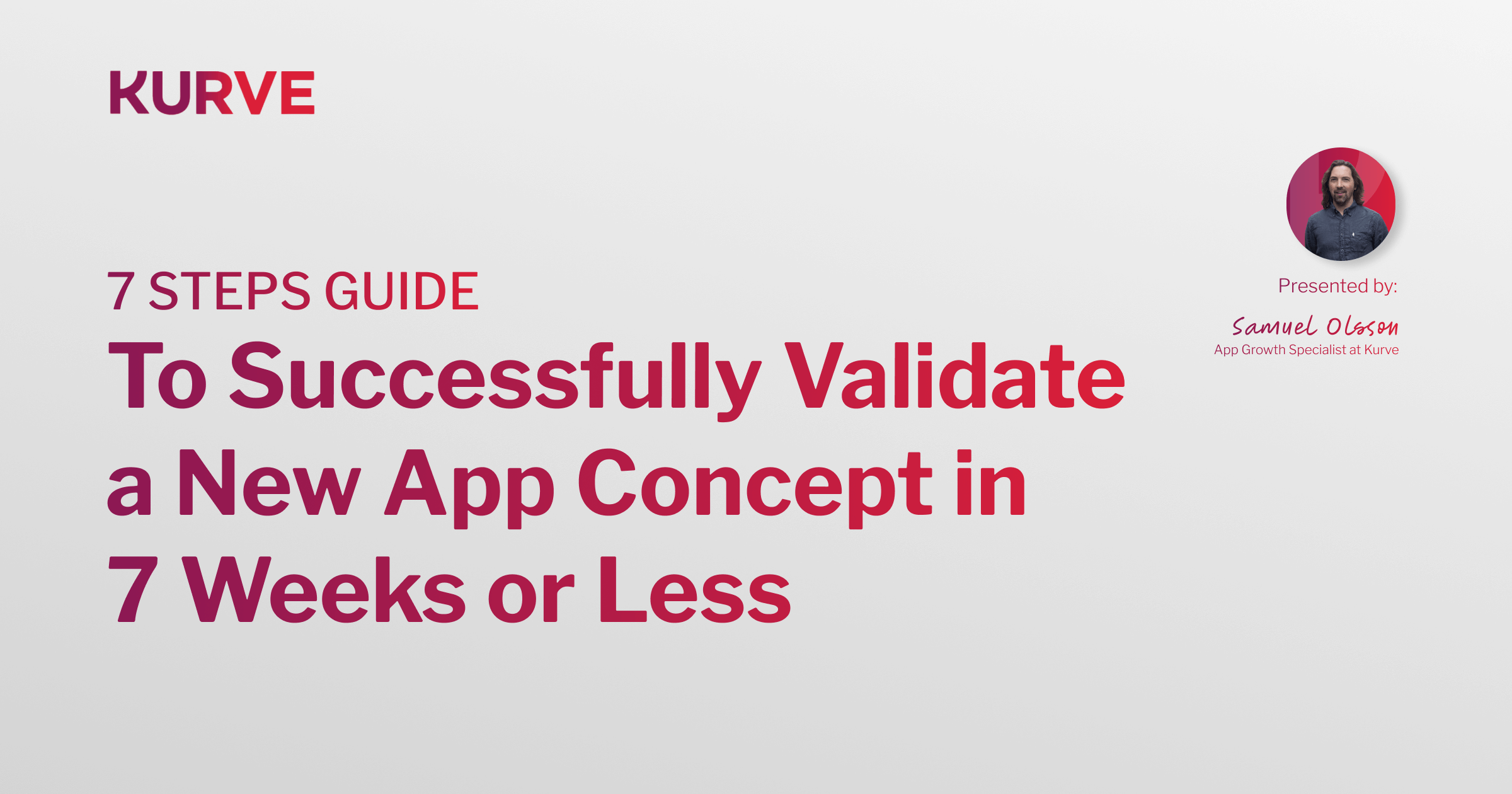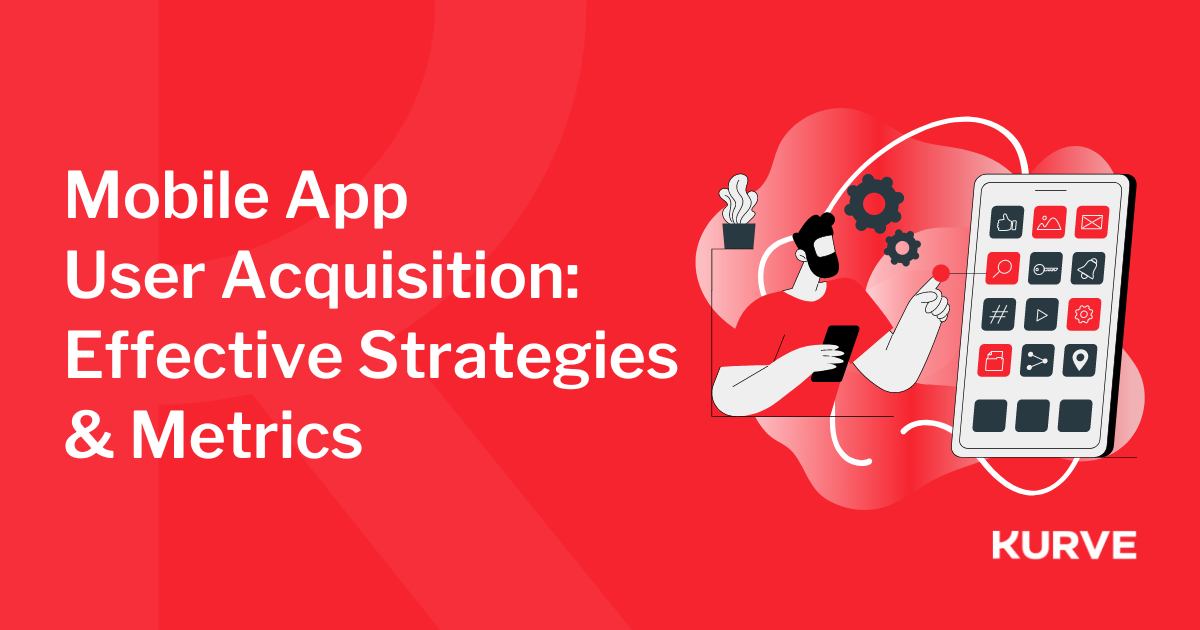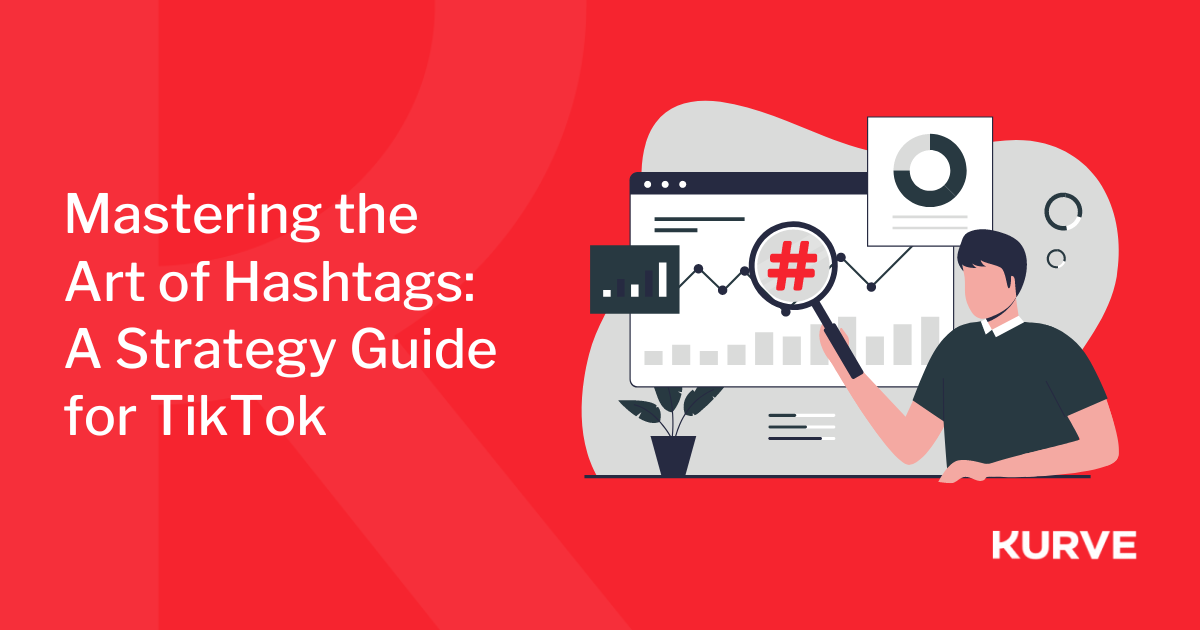How to Create an Effective B2B Brand Positioning Strategy
With markets more saturated than ever, a unique and compelling brand is essential for B2B success.
Whether you're a startup or an established enterprise, brand positioning is the key to setting your company apart. Brand positioning is crafting and telling a story that resonates with your target market, turning them first into customers and then into loyal advocates.
In this guide, we'll take you step-by-step through creating a positioning strategy and messaging that establishes your authority in the market.
| Table of Contents |
|
What is B2B Brand Positioning? Types of Brand Positioning Strategies |
What is B2B Brand Positioning?
Brand positioning is the statement of customers' perception of your company. This perception is shaped by everything from your values and vision to the specific solutions you provide.
Effective B2B brand positioning creates a unique identity that distinguishes you from the competition. It's about defining:
- Who you are: Your core mission and values.
- What you do: The unique ways you solve your customers' problems.
- Why you're different: Things that distinguish you from similar companies.
In a space where product features and offerings can be similar, telling a powerful story sets your brand apart.
Story-led positioning is all about connecting on an emotional level. It shows how your brand aligns with their needs and helps them succeed. It builds a brand narrative highlighting your unique value proposition through stories of impact and transformation.
Want a quick checklist of what not to do when building a brand? Check out our blog post.
Types of Brand Positioning Strategies
Let's explore some common and effective strategies your business can employ:
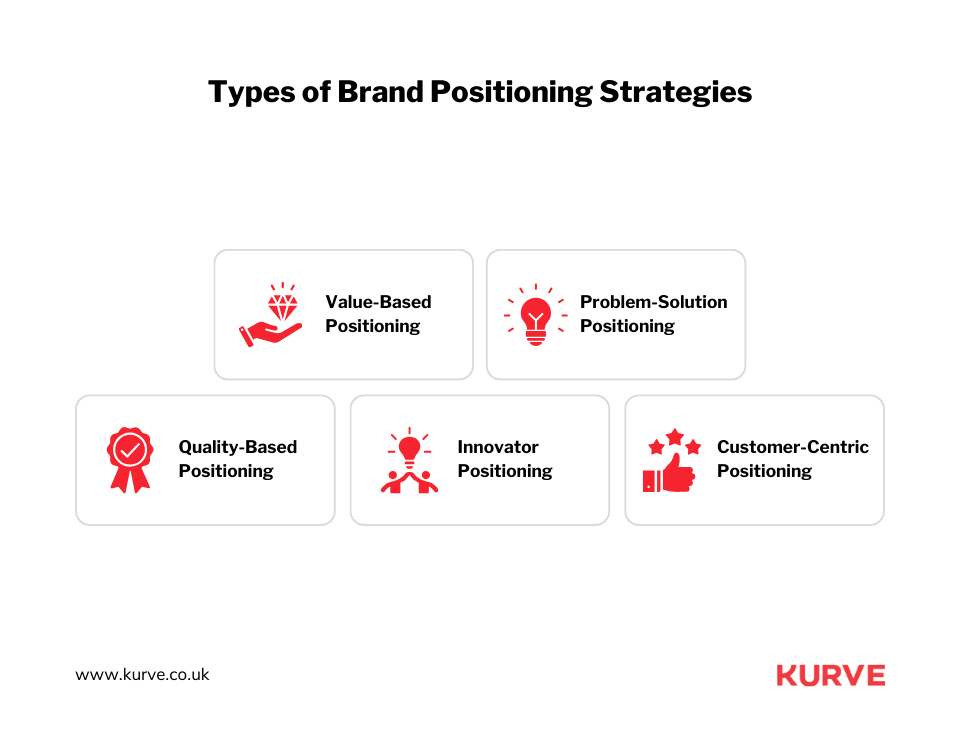
Value-Based Positioning
Value-based positioning centers on showcasing the intrinsic worth of your products or services to customers. This strategy emphasizes aspects such as:
- Quality: High-grade materials, expert craftsmanship, and a dedication to durability.
- Performance: Efficiency gains, reliability, and problem-solving capabilities.
- Benefits: The positive impact on your customers' operations, time savings, or competitive edge.
It focuses on building a perception of your brand as worth the investment due to its long-term value.
Examples of Value-Based Positioning:
- Apple: Customers may pay a premium for Apple products, but they associate the brand with high quality, intuitive user experiences, and a sleek design that delivers value beyond the price tag.
- Patagonia: This outdoor apparel company emphasizes sustainability, durability, and ethical manufacturing, justifying a higher price point for customers who share these values.
Problem-Solution Positioning
Problem-solution positioning revolves around deeply understanding the specific pain points faced by your target audience. Your brand then positions itself as the ideal solution tailored to those challenges.
This approach is particularly effective in industries with well-defined customer problems, such as:
- Technology: Complex software or IT solutions addressing security risks, data management, or compliance issues.
- Healthcare: Medical devices or services that help diagnose conditions, improve treatment outcomes, or alleviate patient discomfort.
- Finance: Tools that streamline processes, aid in risk management, or provide insights into complex financial data.
Examples of Problem-Solution Positioning:
- Zoom: This video conferencing tool rose to prominence by addressing the frustrations of unreliable and complex meeting platforms, particularly during the shift to remote work.
- HubSpot: Their marketing automation software positioned itself as the answer to fragmented lead generation and customer management processes for growing businesses.
Quality-Based Positioning
This strategy will make your brand synonymous with superior quality, craftsmanship, and excellence.
Here's how this plays out in B2B markets:
- Differentiation: In a crowded B2B marketplace, exceptional quality becomes a powerful point of difference, especially in sectors where reliable performance is critical.
- Customer trust: High-quality products and services build trust with customers who rely on your solutions to run their business operations smoothly.
- Justification of premium pricing: Customers may be willing to pay a premium when confident they receive superior materials, lasting performance, and reduced long-term maintenance costs.
Examples of Quality-Based Positioning:
- Rolls-Royce: This luxury car maker and aerospace engineering company has built a reputation for unmatched quality, meticulous engineering, and unparalleled performance.
- Miele: A manufacturer of high-end home appliances, Miele is known for its precision engineering, longevity of products, and the highest standards of manufacturing excellence.
Innovator Positioning
Innovator positioning tells the world that your brand is at the forefront of your industry.
This strategy emphasizes:
- Cutting-edge solutions: Showcasing your ability to develop new, disruptive technologies or unique problem-solving methods.
- Thought leadership: Establishing a reputation for driving industry conversations, setting trends, and shaping the future of your field.
- Competitive advantage: Innovator positioning appeals to customers seeking the latest advancements to stay ahead of competitors.
Examples of Innovator Positioning:
- Tesla: Redefined automotive standards with electric vehicles, advanced self-driving features, and a focus on sustainable technology.
- Amazon Web Services (AWS): Continues to innovate in cloud computing, consistently releasing new services and setting the pace for the industry.
Customer-Centric Positioning
Customer-centric positioning puts your customers' needs, goals, and overall experience at the heart of your brand strategy.
It involves:
- Deep customer understanding: Going beyond demographics to understand customer pain points, decision-making processes, and the desired outcomes from your product or service.
- Building strong relationships: Prioritizing responsive communication, personalized support, and treating customers as valued partners rather than sales figures.
- Prioritizing customer success: Your brand ensures your customers achieve their desired results from your products or services.
Examples of Customer-Centric Brands:
- Amazon: Obsessive focus on customer convenience through features like one-click ordering, fast shipping, and a vast product selection.
- Nordstrom: Legendary customer service with generous return policies, personalized styling assistance, and going the extra mile to resolve customer issues.
How to Create Your Unique B2B Brand?
Here's a step-by-step approach to developing a brand that helps you cut through the noise and achieve your business goals.

1. Understand Your Market
Building a strong brand starts with a deep, nuanced understanding of your market. Go beyond mere demographics and surface-level analysis.
Here's how to dig deeper:
- To communicate your solution, it's important to understand why a purchase decision is made. This includes prioritized factors, key stakeholders, and individual concerns.
- Study your competition carefully. Identify their strengths and weaknesses, and determine which unfulfilled customer needs you can address.
- Uncovering hidden insights from motivations, aspirations, and pain points that might not surface in traditional research. Look for common themes that emerge in customer narratives.
- Understand how your ideal customers describe their experiences and struggles; you'll identify gaps in the market and areas where you can create a unique, compelling offering.
2. Define Your Unique Value Proposition
Your Unique Value Proposition (UVP) is the heart of your story-led positioning. It's a concise promise encapsulating what makes your brand different and valuable for your ideal customers.
To craft a compelling value proposition:
- Think about your best customer success stories. What specific problems did you solve? What transformations did your clients experience? Mine these stories for the concrete benefits you offer.
- Customers buy based on what your product or service will do for them. Showcase the quantifiable and emotional impact you provide.
- Price matters, but it also highlights the intrinsic value you provide. Communicate how your solutions improve lives, maximize efficiency, or provide a competitive advantage.
- Your UVP should position your ideal customer as the hero of their story, with your brand as the guide or tool that helps them achieve their goals.
- Use vivid language, customer testimonials, and case studies that illustrate your UVP in action.
3. Develop Your Positioning Statement
Your positioning statement distills your unique selling proposition into a powerful, memorable declaration.
Here's a step-by-step approach to incorporate narrative elements:
- Use the insights from your market research to craft a vivid picture of your ideal customer. Go beyond demographics. Describe their challenges, aspirations, and motivations like you're describing a character in a story.
- What's the core problem you solve for your hero? What successful outcome do you enable? Paint a picture of the positive change your brand brings about.
- Draw upon the 'why' behind your UVP. How do you achieve this transformation differently or better than competitors? It could be your innovative technology, exceptional customer experience, or a specialized offering.
For example, instead of "We provide cybersecurity software for businesses," try: "For IT leaders battling relentless cyber threats, we offer AI-powered protection that identifies and stops attacks before they disrupt operations. Unlike reactive solutions, we give you peace of mind and safeguard your success."
4. Align Your Brand with Your Positioning
Your entire brand must live and breathe your carefully crafted narrative.
Here's how to ensure alignment:
- Your logo, color palette, font choices, and design should reflect your positioning. Is your look modern and innovative, or does it convey stability and trustworthiness?
- Your language should embody your brand persona and reinforce your UVP in all channels. Avoid generic marketing messages and infuse your content with themes that resonate with your target audience’s pain points and aspirations.
- Share customer successes and industry insights, showcasing your expertise.
- Be a thought leader and share valuable content that consistently cements your authority and aligns with your brand story.
5. Communicate Your Brand Positioning
Once you establish your brand position, it's time to share your unique story across various marketing channels.
Here's how to use narrative for impact:
- Your website is a prime opportunity to showcase your narrative. Feature customer testimonials, case studies highlighting transformations, and an "About Us" page that tells your brand origin story.
- Engage your community through social media by sharing company updates that humanize your brand and align with your values. Highlight customers using your solutions and their successes.
- In advertising, create video ads to tell a compelling brand or customer testimonial story. Tailor ad copy to address specific challenges faced by different segments of your buyer persona.
- Remember that the language, tone, and visuals used across all channels should reinforce your positioning.
6. Monitor and Adapt
Market trends shift, customer needs evolve, and your own solutions may change.
Here's how to ensure your brand positioning remains relevant and effective:
- Track how your brand is discussed online – sentiment analysis tools can be helpful for large-scale monitoring.
- Regularly gather customer feedback on how they perceive your brand and whether their experience aligns with your positioning.
- Stay on top of industry trends, emerging technologies, and your competitors' moves. Identify potential threats or new opportunities your positioning should address.
- Be prepared to fine-tune your UVP, messaging and visual identity if the data indicates it's necessary. Avoid getting so attached to your initial positioning that you become blind to the need for adjustments.
Positioning is a continuous evolution, not a static declaration. By staying attuned to feedback and market shifts, you'll ensure your brand remains strong and impactful over the long term.
The Winning Formula
B2B marketing always evolves. Generic strategies and cookie-cutter approaches don't cut it anymore. That's where Kurve is changing the game.
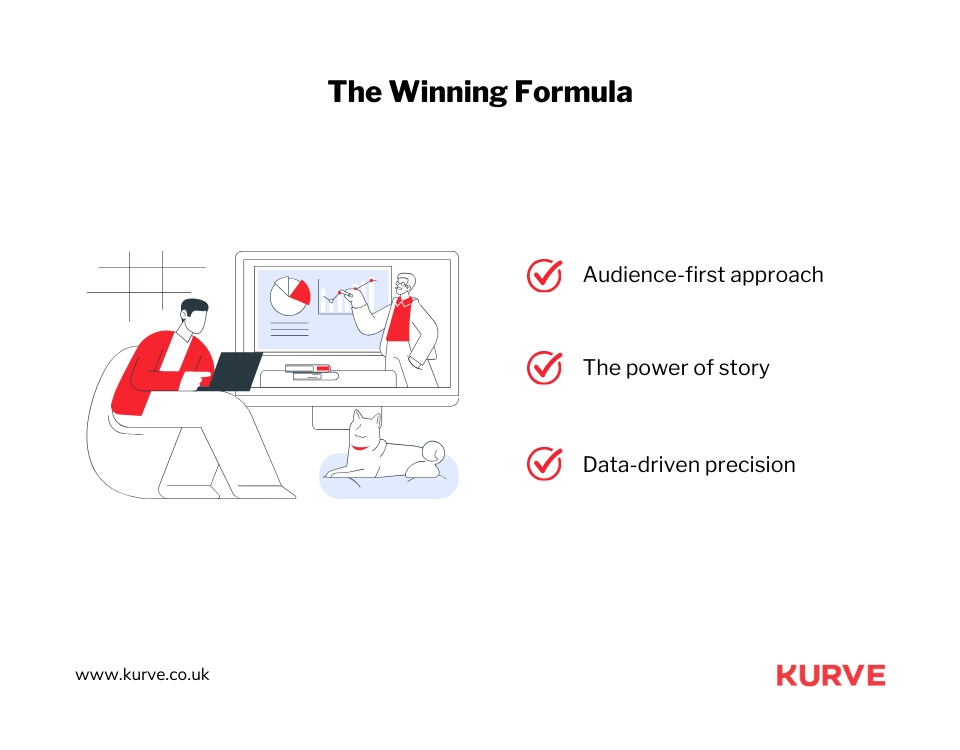
Kurve is laser-focused on empowering B2B SaaS companies to achieve breakthrough results. We blend:
- Audience-first approach: Kurve deepens into understanding your ideal customer's pain points, priorities, and how their language changes at each stage of their decision-making process.
- The power of story: Instead of dry feature lists, Kurve helps you articulate your unique value through compelling narratives that resonate emotionally with business decision-makers.
- Data-driven precision: Kurve understands the unique dynamics of the B2B SaaS market. We combine storytelling with analytics and insights to tailor strategies that get tangible results.
This matters as B2B buyers are savvy and bombarded with choices. Kurve's innovative formula cuts through the noise using a mix of deep market insights, distinctive positioning, and clear communication of your value proposition. Our methods drive lead generation, increase conversions, and propel your B2B SaaS brand to new heights.
Audience Research + Business Storytelling
Kurve understands that the key to successful B2B SaaS marketing is a deep connection with your target audience and a clear value proposition.
The process goes beyond surface-level demographics or basic firmographics;
- Kurve digs into the "why" behind purchase decisions in the SaaS space. This includes identifying pain points, desired outcomes, and the key factors influencing decision-makers.
- Kurve doesn't sell features. We craft narratives around how your product or service solves critical business problems, aligns with customer goals, and provides a clear competitive advantage.
- B2B buyers are inundated with technical jargon. Kurve helps you translate technical specifications into stories that resonate with your target audience using language they understand and value.
For example, we can mold a CTO's struggle with managing fragmented data sources into a story about your software, bringing seamless integration and enabling better decision-making.
Positioning Strategy + Data-Driven Insights
Kurve knows that a generic positioning strategy won't suffice in a crowded market. The approach goes beyond mere buzzwords and focuses on crafting a unique identity that resonates with your ideal B2B SaaS customer.
We do this by:
- Meticulously studying your rivals' strengths and weaknesses. We pinpoint the gaps in the market and identify where you can stand out through differentiated positioning.
- Kurve doesn't just claim you're the best; it will be backed up with data. This could mean highlighting metrics like ROI, time savings, or increased efficiency that your SaaS solution provides.
- Kurve utilizes data to refine messaging, ensuring it speaks directly to your target audience's most pressing challenges. We track the performance of your marketing efforts and A/B test variations and monitor engagement to optimize results continuously.
For example, if research reveals security concerns are top-of-mind for CFOs, we position your solution as the safeguard for sensitive data, quantifying risk mitigation. We identify slow, manual onboarding processes as a pain point that could lead to positioning your SaaS as the solution to streamlined implementation and accelerated time-to-value.
Differentiation + Articulation
Kurve helps you break through the noise with a distinctive brand voice and crystal-clear messaging.
Here’s how we do it:
- Kurve analyzes your strengths, the pain points you solve uniquely, and what sets you apart from the pack. This becomes the foundation for your brand's differentiated position in the market.
- Kurve helps you cut through the jargon and articulate the core value your SaaS solution provides in a way that resonates with busy decision-makers. They focus on benefits, outcomes, and what makes you different.
- Your brand is more than just a logo. Kurve helps you craft a consistent brand story that showcases your mission, vision, and the unique problems you solve, making a lasting impression on your audience.
Kurve's approach isn't about fancy words but real results. By achieving a distinct position and communicating your value, we help your SaaS attract the right customers, command premium pricing, and build brand loyalty.
Elevate Your Brand Through Strategic Storytelling
Finding a partner who understands the unique challenges and opportunities is key. Kurve's specialized approach combines the power of storytelling, data-driven insights, and a focus on audience psychology to help your brand achieve extraordinary results.
Ready to elevate your B2B marketing and achieve sustainable growth? Contact Kurve today to learn more about their transformative approach.
Or, explore our blog for valuable insights and strategies to power your B2B SaaS brand.
